The Colosseum is a magnificent ancient amphitheater in Rome, Italy. It was built by the Flavian emperors between 70 and 96 AD as a gift to the Roman people and a symbol of their power and glory. The Colosseum could hold up to 80,000 spectators who enjoyed various forms of entertainment, such as gladiator fights, animal hunts, mock naval battles, and dramas based on Roman mythology. The Colosseum is one of the most visited monuments in the world, attracting millions of tourists annually. It is a UNESCO World Heritage Site and one of the New 7 Wonders of the World. It is also a place of Christian pilgrimage, as many martyrs were killed in the arena during the persecution of the early Church. Every Good Friday, the Pope leads a torchlit procession around the Colosseum to commemorate their sacrifice. The Colosseum is open to the public every day except on January 1 and December 25. The opening hours vary depending on the season but generally range from 08:30 am to 04:30 pm. The admission ticket costs $18 (€16.38, £15.66) and includes access to the Roman Forum and Palatine Hill, two other important archaeological sites nearby. Visitors can also book guided tours, audio guides, or special tickets to access the underground and the arena floor, where the gladiators and animals were kept before the shows.
What is the Colosseum?
The Colosseum is an ancient Roman amphitheater located in Rome, Italy. It is the largest amphitheater ever built and remains the largest standing in the world. The Colosseum was primarily used for various forms of entertainment, such as gladiatorial contests, animal hunts, and re-enactments of battles. It could accommodate 50,000 to 80,000 spectators at different times in its history. Construction of the Colosseum began in the year 72 AD under the rule of Emperor Vespasian and was completed in 80 AD during the reign of his successor, Emperor Titus, with further modifications made during the reign of Emperor Domitian. The Colosseum was built using limestone, volcanic rock, and brick-faced concrete. Despite being over 2,000 years old, it is still an iconic symbol of ancient Rome. The Colosseum measures 157 feet (48 meters) in height. It has an elliptical shape with a length of 615 feet (189 meters) and a width of 510 feet (156 meters). The arena where the events took place has a length of 282 feet (86 meters) and a width of 177 feet (54 meters).
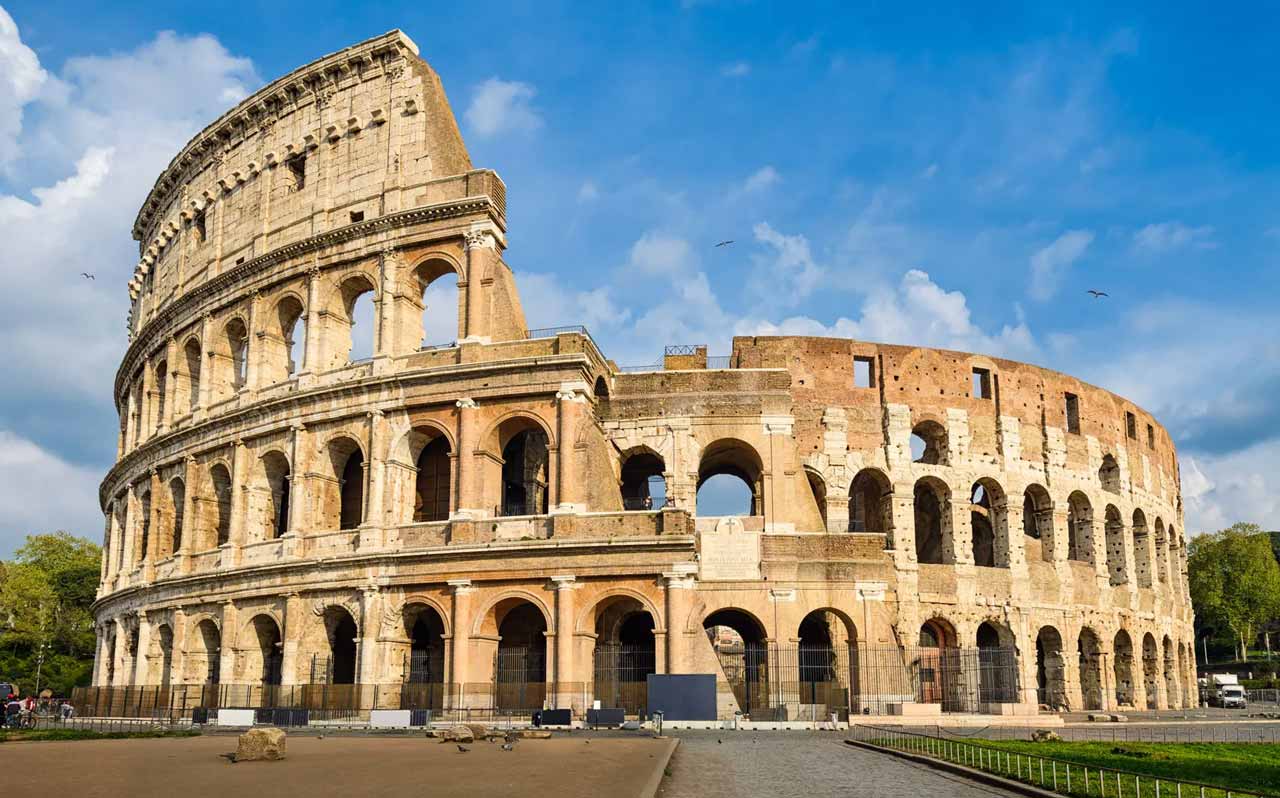
What architectural style is most prominent in the Colosseum?
The Colosseum showcases the prominent architectural style of ancient Rome, known as Roman architecture. Arches, vaults, and concrete construction techniques characterize the architectural style. The Colosseum, in particular, exemplifies the Roman architectural mastery in design and construction. The key feature of the Colosseum is its innovative use of the arch. The exterior facade of the amphitheater consists of four stories of arches, known as arcades, which create a visually striking and structurally sound design. These arches are made of stone and serve both decorative and functional purposes, supporting the massive structure. The Colosseum is also a vaulted system. The interior of the amphitheater features a complex network of vaults and corridors that allow for efficient circulation of people and facilitate the staging of various events. The use of vaults also contributed to the overall strength and stability of the structure. Concrete, a material widely used in Roman architecture, played a crucial role in the construction of the Colosseum. The amphitheater’s outer walls were made of concrete faced with bricks and travertine limestone, creating a durable and visually appealing facade. The innovative use of concrete allowed for the construction of large-scale structures like the Colosseum.
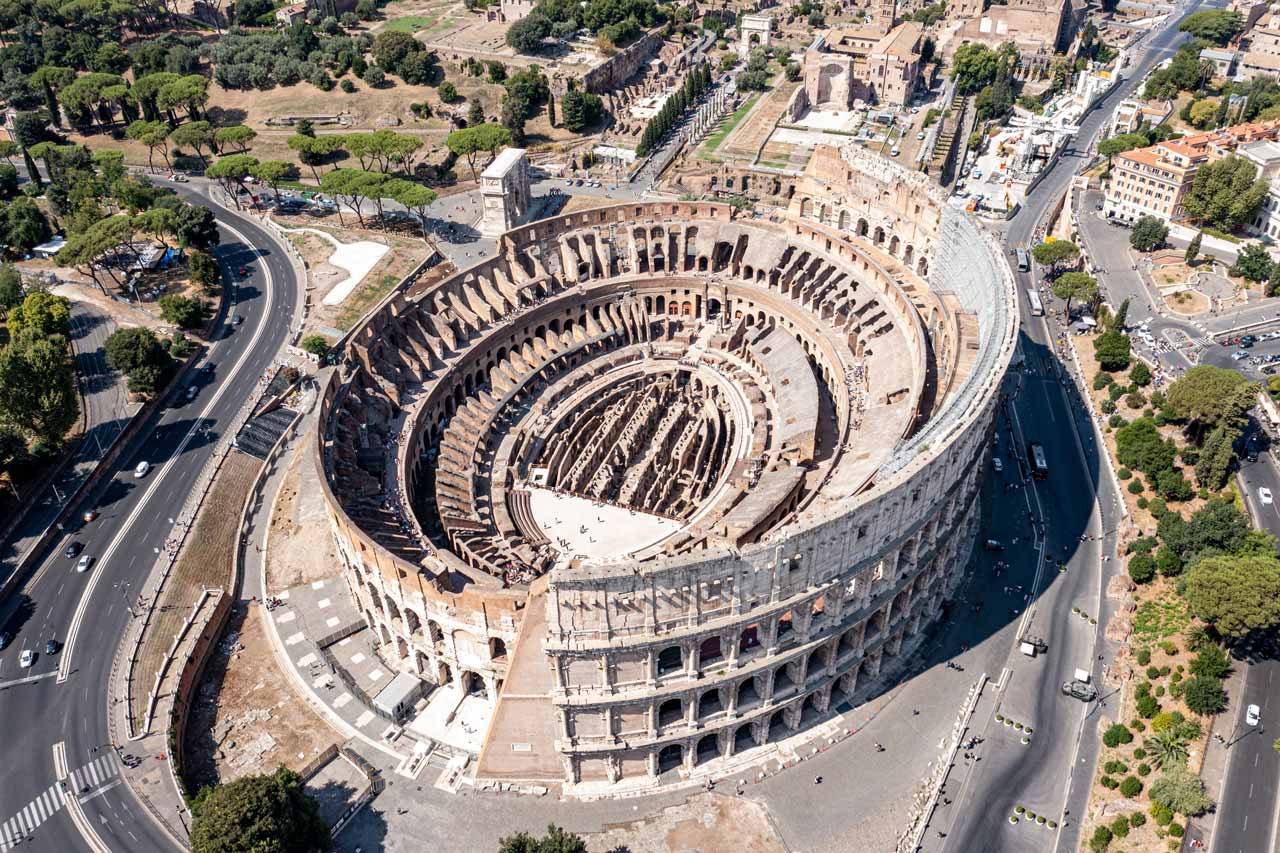
What structural engineering principles were employed in the construction of the Colosseum?
There are 4 major structural engineering principles that are employed in the construction of the Colosseum. Firstly, the Colosseum utilized the principle of arches and vaults. The extensive use of arches in the design provided strength and distributed the weight evenly, allowing for the construction of large open spaces within the amphitheater. The stone arches supported the massive structure, creating a stable foundation. Vaulted ceilings and corridors helped distribute the upper levels’ weight and provided structural integrity. Secondly, the Colosseum incorporated the principle of concrete construction. Concrete, a versatile and durable material, was used extensively in constructing the amphitheater. The concrete mixture consisted of lime, volcanic rock, and other materials. It allowed for the creation of strong and solid walls, providing stability and support for the structure. Concrete also facilitated the construction of complex shapes, such as the elliptical form of the Colosseum. Thirdly, the Colosseum employed innovative construction techniques to enhance its structural integrity. The building utilized radial walls and buttresses, which provided additional support and stability. These elements helped to counteract the lateral forces that could have caused the structure to collapse. The strategic placement of these walls and buttresses played a crucial role in reinforcing the amphitheater and ensuring its long-term stability. Lastly, the Colosseum incorporated a sophisticated drainage system to manage water runoff. The amphitheater featured a network of underground channels and drains that efficiently directed rainwater away from the structure. It prevented water damage and erosion, which could have weakened the building’s foundations over time.
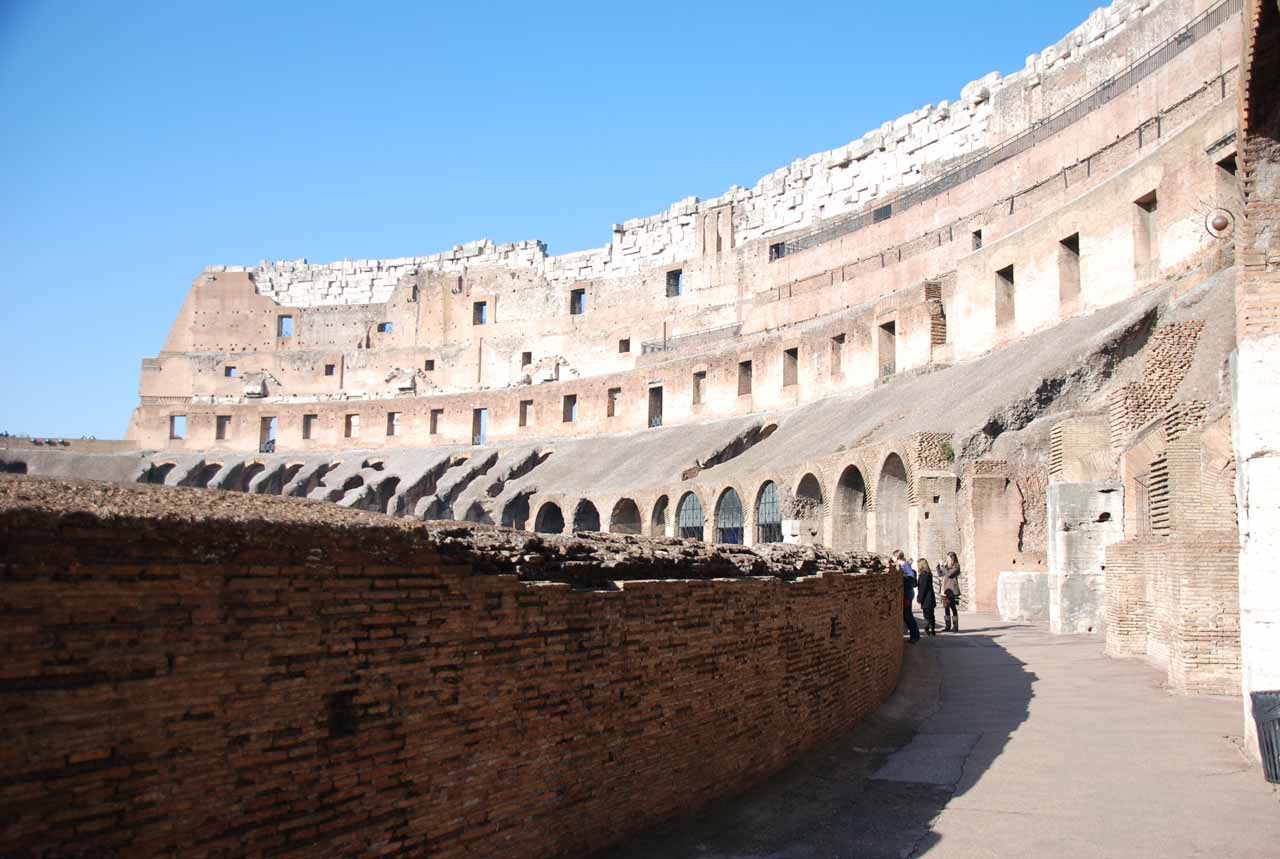
Who designed the Colosseum?
The Colosseum was designed by architects whose names are not definitively known. however, it is believed that the primary architects involved in its design were Vespasian’s chief engineer, Gaius Monius Moniolus, and his successor, Titus. These architects worked under the supervision of the Roman emperors Vespasian and Titus, who were responsible for the construction of the Colosseum. The architects used their engineering, mathematics, and architectural design expertise to create the iconic structure. They incorporated innovative techniques, such as arches, vaults, and concrete construction, to achieve the impressive architectural feat that the Colosseum represents.
What are the historical design influences visible in the Colosseum?
There are four major historical design influences visible in the Colosseum. Firstly, the Colosseum exhibits influences from Greek architecture. The Romans drew inspiration from the ancient Greeks and incorporated columns and proportions into their architectural designs. It can be observed in the Colosseum’s exterior facade, which features the Doric, Ionic, and Corinthian orders of columns. These columns added aesthetic appeal and provided structural support to the building. Secondly, the design of the Colosseum reflects the Roman engineering prowess and their mastery of arches and vaults. The use of arches, a characteristic feature of Roman architecture, can be seen throughout the structure. Arches were employed to construct the Colosseum’s arcades, providing strength and stability. The incorporation of vaults allowed for the creation of large open spaces and facilitated the movement of people within the amphitheater. Thirdly, the Colosseum’s design was influenced by the practical considerations of hosting large-scale events. The architects focused on creating a functional space that would accommodate many spectators and facilitate the staging of various activities. It can be observed in the layout of the seating arrangements, corridors, and entrances, which were meticulously designed to ensure efficient crowd management and accessibility. Lastly, the Colosseum reflects the Roman emphasis on grandeur and monumentality. The sheer scale of the structure, with its massive dimensions and capacity to hold tens of thousands of people, demonstrates the Romans’ desire to create monumental architectural achievements. The Colosseum served as a symbol of Roman power and showcased their engineering and architectural capabilities.
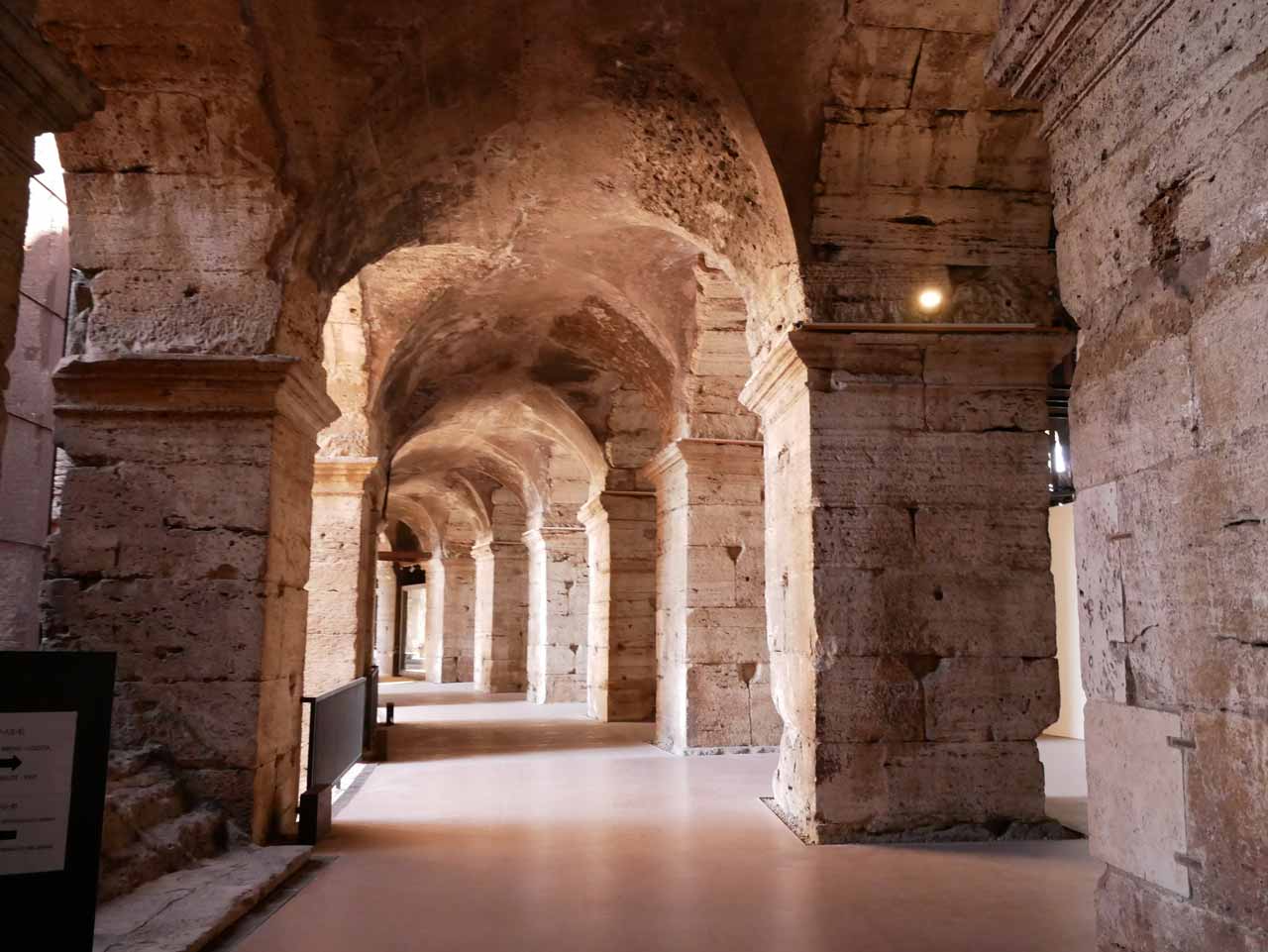
How has the Colosseum influenced the design of other buildings in Italy?
The Colosseum influenced the design of other buildings in Italy in 4 ways. Firstly, the Colosseum has influenced the design of amphitheaters and entertainment venues in Italy. Inspired by the grandeur and functionality of the Colosseum, architects incorporated similar elements into their designs. The Verona Arena in Verona, Italy, built in the 1st century AD, mirrors the Colosseum’s elliptical shape and tiered seating arrangement. The design approach has been replicated in various amphitheaters and stadiums across Italy. Secondly, the Colosseum’s arches and vaults have influenced the design of Italy’s historical and religious buildings. The Romanesque and Gothic architectural styles, prevalent during the medieval period, drew inspiration from the Colosseum’s structural techniques. Arches and vaults became key elements in the design of cathedrals, basilicas, and other religious structures, such as the Duomo di Pisa and the Milan Cathedral. These architectural features provided structural stability and added a sense of grandeur and verticality to the buildings. Thirdly, the Colosseum’s enduring influence can be seen in the design of government and civic buildings in Italy. The Neoclassical architectural style, popular during the 18th and 19th centuries, drew inspiration from ancient Roman architecture, including the Colosseum. Government buildings, such as the Palazzo di Giustizia in Rome and the Palazzo Madama in Turin, feature architectural elements reminiscent of the Colosseum, such as columns, arches, and symmetrical designs. Lastly, the Colosseum’s impact extends to Italy’s modern architecture realm. Contemporary buildings often incorporate elements of the Colosseum’s design to connect with the country’s rich architectural heritage. The Palazzo del Lavoro in Turin and the Palazzo Italia in Milan feature modern interpretations of the Colosseum’s arches and vaults, creating a harmonious blend of ancient and modern architectural styles.
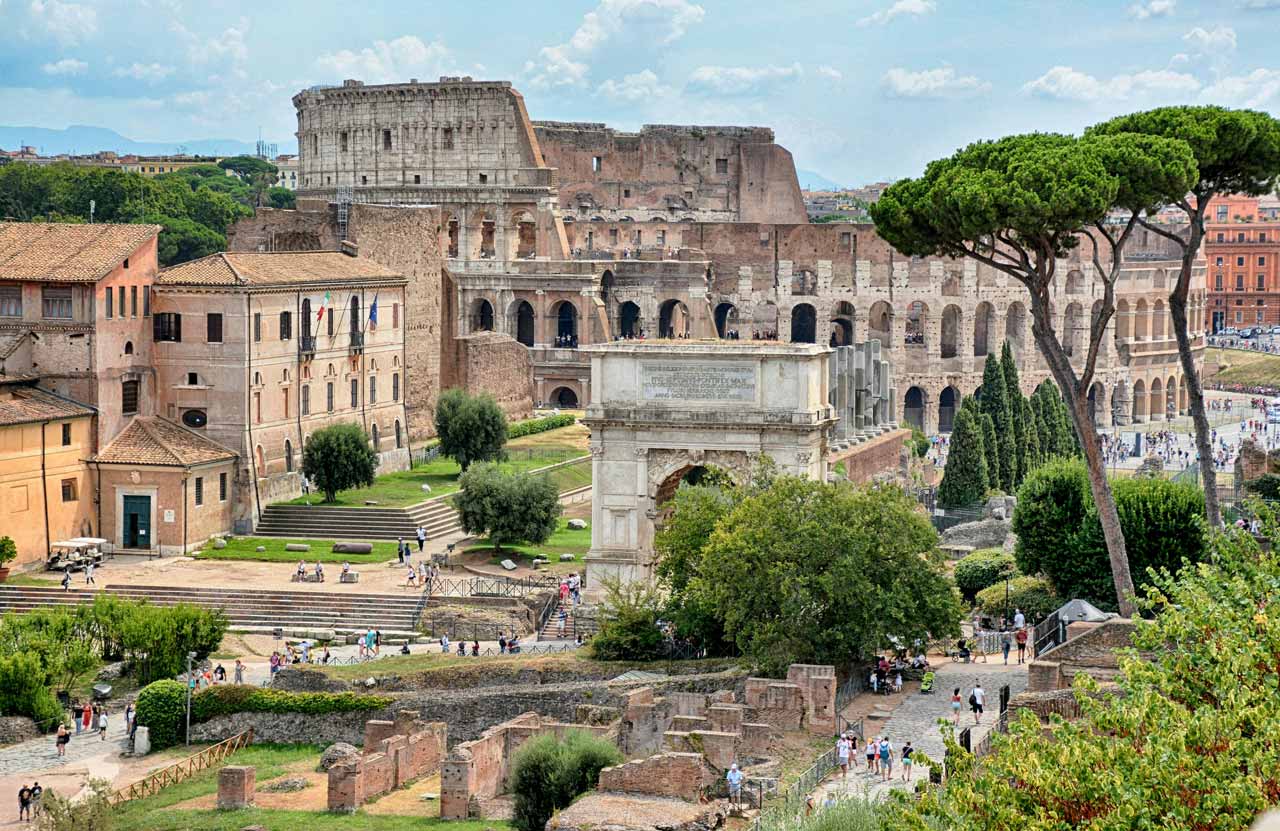
What purpose does the Colosseum serve, and how does the design help?
The Colosseum served as an amphitheater in ancient Rome, fulfilling various purposes for Roman society. Its primary function was to host public spectacles and entertainments, including gladiatorial contests, animal hunts, and mock naval battles. These events were organized to entertain the Roman population and maintain social order by diverting their attention from political and social issues. The Colosseum’s design played a crucial role in facilitating these activities. The design of the Colosseum was well-suited for accommodating large crowds and staging diverse events. Its elliptical shape allowed for optimal visibility, ensuring spectators could observe the spectacles from any angle. The tiered seating arrangement, which could hold 50,000 to 80,000 people, provided enough seating capacity and facilitated efficient crowd management. The Colosseum’s system of corridors, ramps, and entrances allowed for easy access and flow of people within the amphitheater, ensuring a smooth and organized experience for the spectators. The architectural features of the Colosseum contributed to the safety and functionality of the venue. Arches, vaults, and concrete construction provided structural stability and support, creating a vast open space without internal columns. This design innovation ensured unobstructed views for the audience. The complex network of underground chambers and passageways, known as the hypogeum, enabled the efficient movement and staging of gladiators, animals, and props, enhancing the spectacle and ensuring smooth transitions between events.
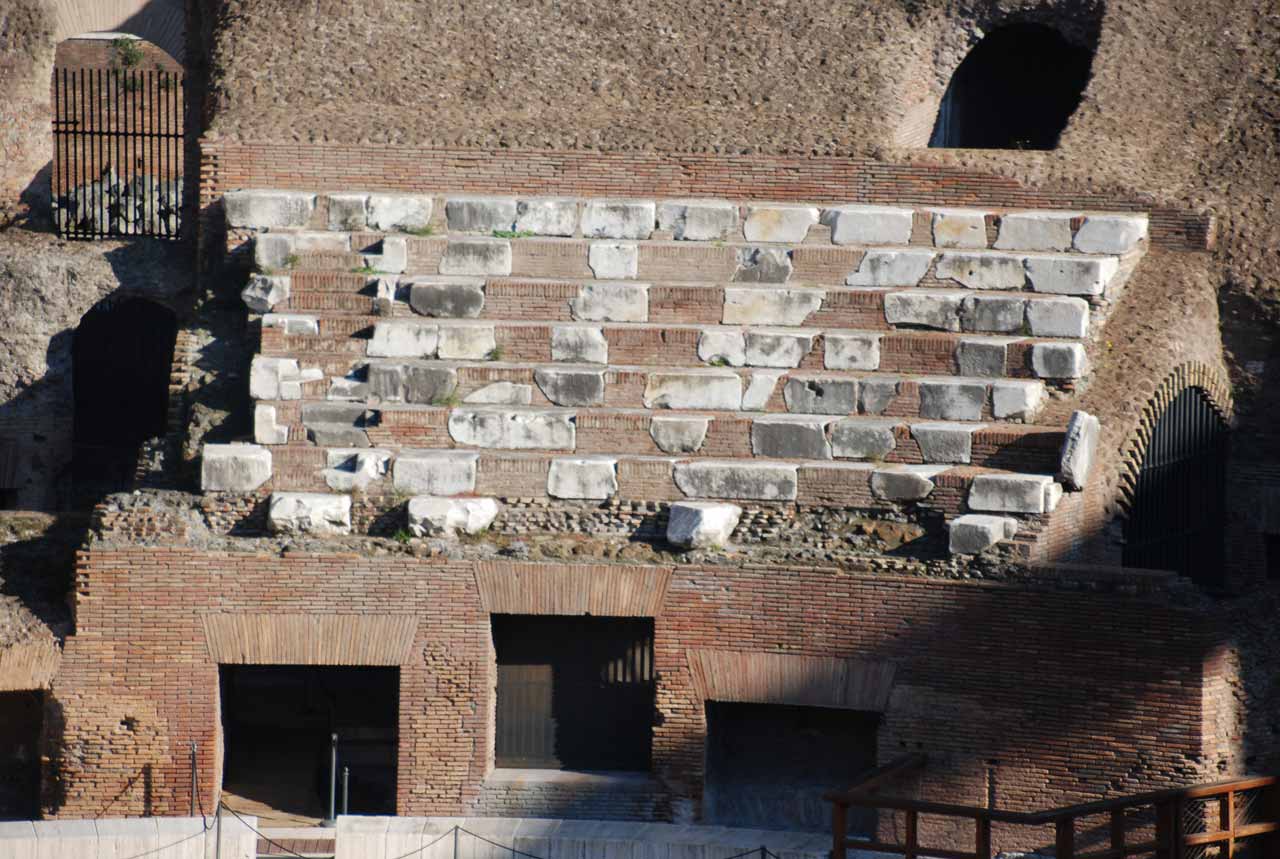
How is the Colosseum maintained?
The Colosseum is maintained through various preservation and restoration efforts to ensure its longevity and structural integrity. Regular maintenance is carried out by experts, including archaeologists, architects, and conservators, who assess the monument’s condition and implement necessary repairs and conservation measures. The maintenance of the Colosseum includes periodic cleaning to remove dirt, pollutants, and biological growth that can damage the structure. This is done using gentle cleaning methods and appropriate cleaning agents to avoid causing any harm to the ancient materials. The preservation team conducts regular inspections to identify areas of deterioration or vulnerability, such as cracks or erosion, and takes appropriate measures to address these issues. Restoration projects are undertaken to repair and reconstruct damaged or missing elements of the Colosseum. These efforts include replacing deteriorated stones, consolidating fragile areas, and reinforcing the structural stability of the monument. The restoration work aims to maintain the authenticity and historical significance of the Colosseum while ensuring its safety for visitors. Financial resources for maintaining the Colosseum are obtained through government funding, private donations, and revenue generated from ticket sales. The ticket fees, which vary depending on the type of visit and visitor’s nationality, contribute to the preservation and maintenance of the Colosseum and other historical sites in Rome. These funds are crucial for ongoing maintenance, restoration projects, and implementing preventive measures to safeguard the Colosseum for future generations.
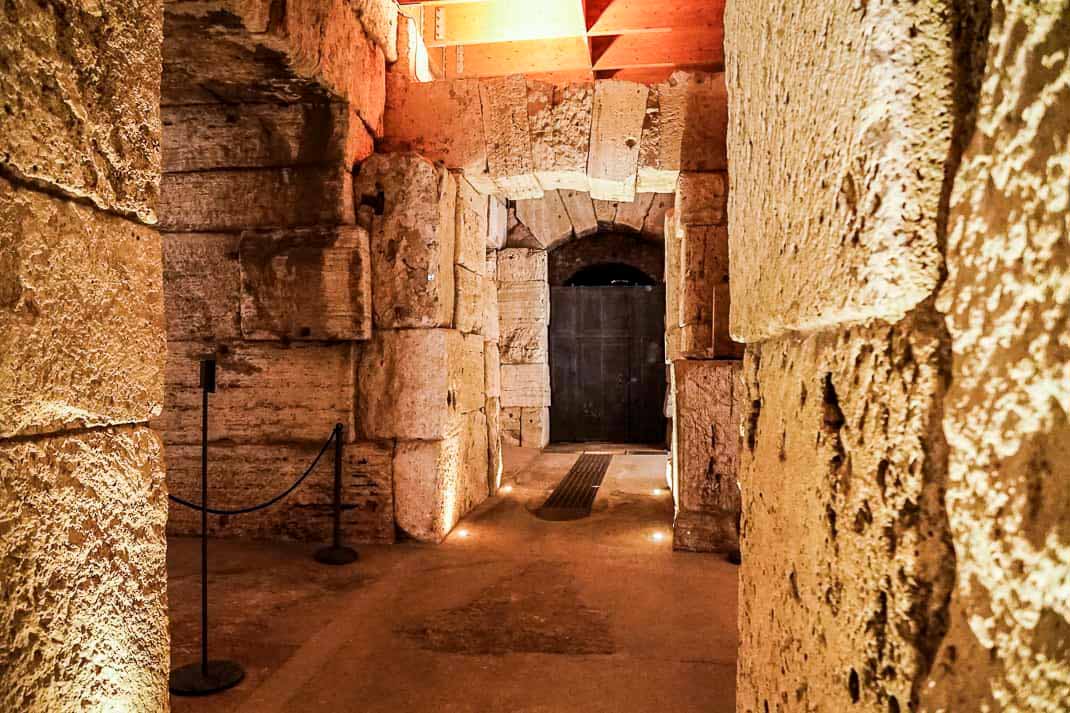
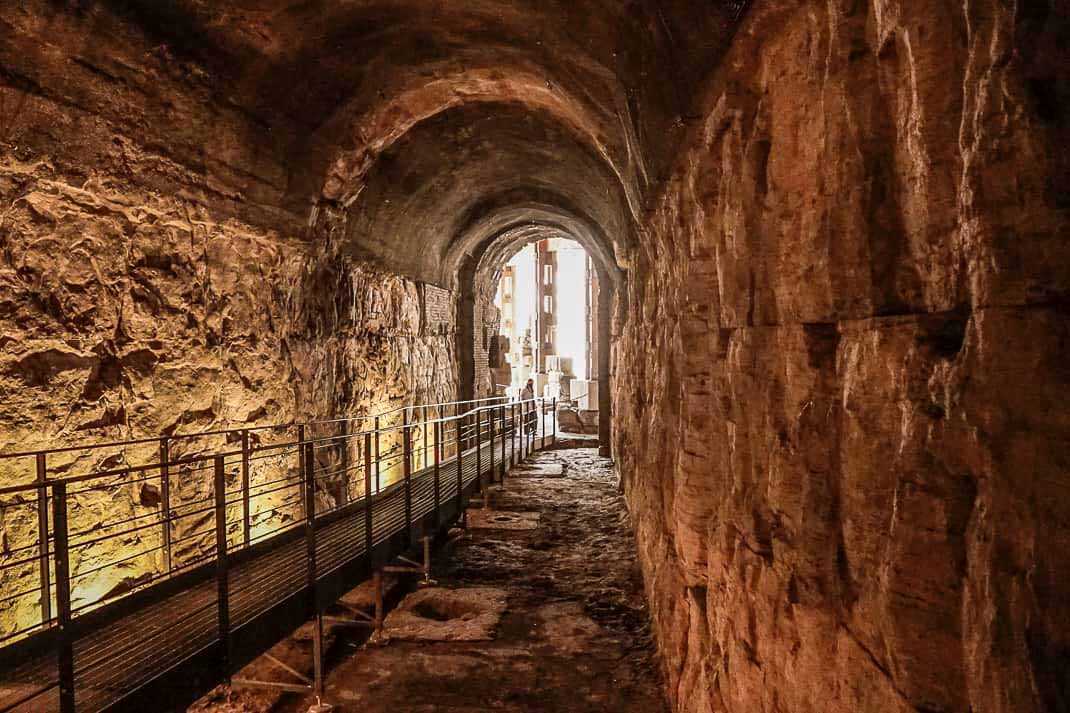
How does the Colosseum reflect cultural and contextual relevance in its design?
The Colosseum reflects cultural and contextual relevance in its design in 4 ways. Firstly, the Colosseum’s grandeur and scale reflect the cultural importance of entertainment in ancient Rome. As a venue for gladiatorial contests, animal hunts, and other spectacles, the Colosseum symbolized Roman power and extravagance. Its massive size and imposing presence communicated the wealth and ambition of the Roman Empire, showcasing the cultural values of spectacle, leisure, and the pursuit of enjoyment. Secondly, the Colosseum’s design reflects ancient Roman society’s social hierarchy and seating arrangements. The tiered seating system, with different levels designated for different social classes, exemplifies the hierarchical structure of Roman culture. The privileged elite occupied the lower levels, closer to the action, while the common people and women were seated higher up. The design aspect facilitated efficient crowd management and reinforced the social order and class distinctions prevalent in Roman society. Thirdly, the Colosseum showcases ancient Rome’s engineering prowess and innovative construction techniques. Arches, vaults, and a sophisticated system of corridors and chambers demonstrated the Romans’ mastery of structural engineering. The design provided stability and allowed for uninterrupted views and efficient movement of people and resources within the amphitheater. Lastly, the Colosseum’s contextual relevance lies in its connection to Rome’s historical and cultural identity. As an iconic symbol of the city, it represents the rich heritage and legacy of ancient Rome. The Colosseum is not merely a historical artifact but a living testament to the cultural and architectural achievements of the Roman Empire.
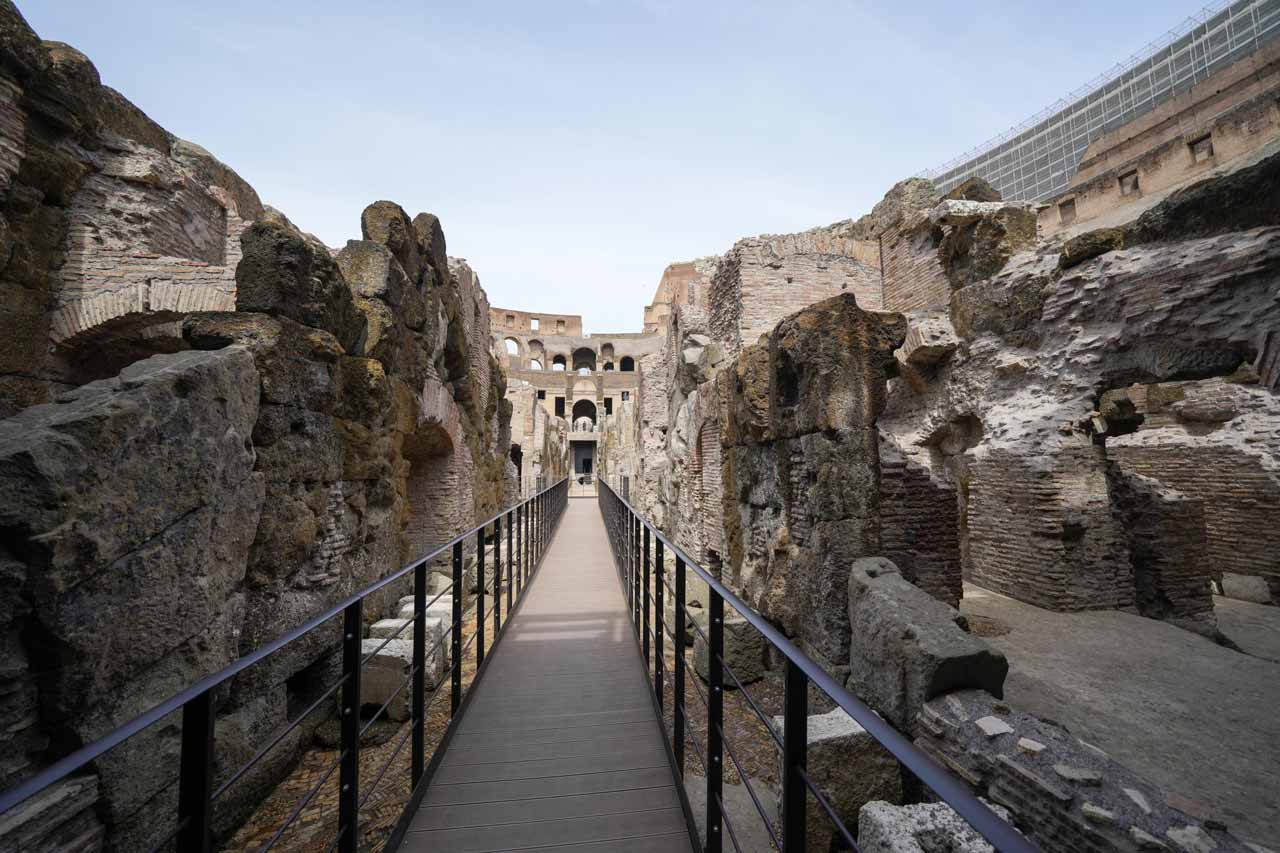
What architectural trend or movement does the Colosseum represent?
The Colosseum represents the architectural trend of Roman architecture, characterized by its distinctive features and construction techniques. The design of the Colosseum embodies the architectural principles of Roman amphitheaters. These structures were characterized by their elliptical shape, tiered seating, and open-air design. The Colosseum, with its oval shape and tiered seating arrangement, follows this trend. The use of arches, vaults, and concrete construction techniques, prominent in Roman architecture, can be seen in the Colosseum’s structure. These architectural elements provided stability, allowed for spacious interior areas without needing internal columns, and showcased the Romans’ engineering prowess. The Colosseum also reflects the Roman architectural movement of grandeur and monumentality. As one of the largest amphitheaters ever built, it exemplifies the Romans’ desire to create impressive structures showcasing their power, wealth, and architectural achievements. The scale, intricate details, and the use of marble and other lavish materials conveyed the grandeur and importance of the Roman Empire.
What are the challenges faced during the restoration of the Colosseum?
There are four major challenges faced during the restoration of the Colosseum. Firstly, the restoration of the Colosseum faces the challenge of preserving its authenticity while ensuring structural stability. The monument’s ancient materials, such as travertine stone, have undergone weathering and deterioration. Restorers must carefully select compatible materials and techniques to repair and replace damaged elements, ensuring the restored portions seamlessly blend with the original structure. The delicate balance between restoration and preservation ensures that the Colosseum retains its historical integrity. Secondly, the sheer size and scale of the Colosseum present logistical challenges during restoration. The monument spans 620 feet (189 meters) in circumference and has multiple levels and chambers. Accessing and working on different structure parts requires careful planning and specialized equipment. Ensuring the safety of workers and visitors while restoration work is underway is of paramount importance. Thirdly, the Colosseum’s popularity as a tourist destination poses challenges in managing visitor flow and preserving the monument. The large number of visitors can create wear and tear on the structure and pose risks to its preservation. Implementing measures to control visitor access, such as guided tours and designated pathways, helps minimize the impact on the monument while allowing visitors to appreciate its historical significance. Lastly, funding the restoration of the Colosseum is a significant challenge. The extensive restoration projects require substantial financial resources. Securing funding from government sources, private donations, and revenue generated through ticket sales is essential to support ongoing restoration efforts. Balancing the need for restoration with the financial constraints is an ongoing challenge that restoration authorities face.
How does the Colosseum comply with contemporary safety and accessibility standards?
The Colosseum complies with contemporary safety and accessibility standards in 4 ways. Firstly, the Colosseum has implemented safety measures to protect visitors. It includes the installation of handrails and barriers at strategic locations to prevent accidental falls and ensure the safety of those exploring the different levels of the structure. Signage and directional markings have been added to guide visitors and prevent congestion, ensuring a smooth flow of foot traffic. Emergency exits and evacuation plans have also been established to address potential safety incidents efficiently. Secondly, the Colosseum has significantly enhanced accessibility for individuals with disabilities. Ramps and elevators have been installed to provide wheelchair access to different areas of the monument. These accessibility features enable individuals with mobility challenges to navigate the Colosseum and fully appreciate its historical significance. Designated accessible restrooms have been added to accommodate the needs of all visitors. Thirdly, the Colosseum has integrated modern technology to improve visitor experiences and ensure safety. The use of audio guides, multimedia presentations, and interactive displays provides visitors with informative and engaging content about the Colosseum’s history and architecture. The technology also helps manage visitor flows and minimize overcrowding, contributing to a safer and more enjoyable visit. Lastly, the Colosseum has implemented measures to preserve the monument while accommodating visitor needs. Protective barriers, such as Plexiglas panels, have been installed to safeguard delicate areas and prevent unauthorized access. Visitor capacities and timed entry systems have been introduced to control the number of people inside the monument at any given time, balancing the need for preservation and accessibility.
Are there any specific tours for architects or architecture enthusiasts to visit the Colosseum?
Yes, there are specific tours designed for architects or architecture enthusiasts to visit the Colosseum. The “Architectural Highlights Tour” of the Colosseum, led by knowledgeable guides with expertise in architecture and Roman history, provides in-depth insights into the design, construction, and engineering techniques employed in the Colosseum’s creation. Participants can learn about Roman architecture’s innovative use of arches, vaults, and concrete and how these elements were incorporated into the Colosseum’s structure. The tour also explores the spatial organization, seating arrangement, and acoustic considerations integral to the amphitheater’s functionality. During the architectural tour, participants can examine the Colosseum’s various levels, corridors, and chambers, gaining a deeper appreciation for the monument’s architectural complexities. They can also learn about the historical context, cultural significance, and subsequent modifications that have shaped the Colosseum’s evolution. These specialized tours cater to architects’ and architecture enthusiasts’ specific interests and curiosity, comprehensively exploring the Colosseum’s architecture and its place within the broader Roman architectural landscape.
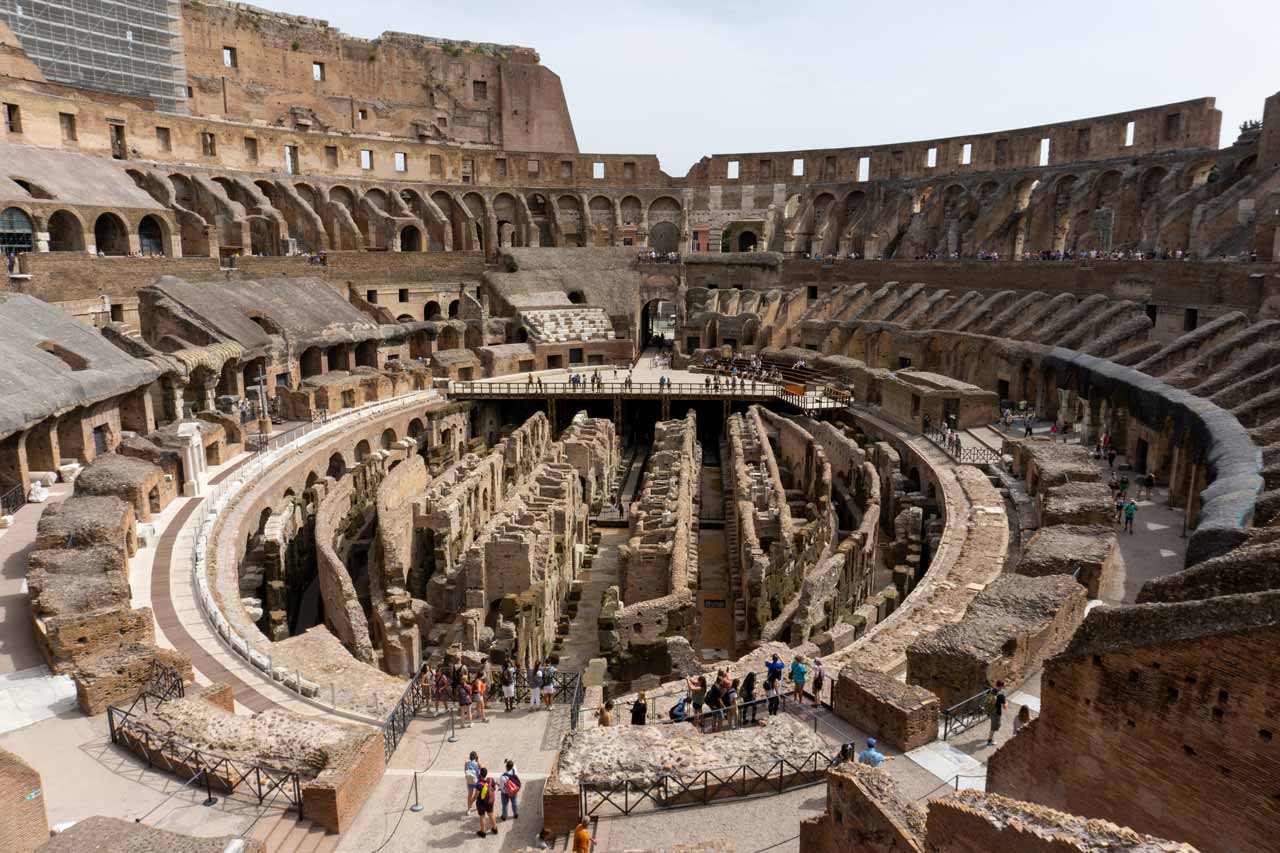
What lessons can architects learn from the design and construction of the Colosseum?
There are 4 lessons that architects can learn from the design and construction of the Colosseum. Firstly, architects can learn from the Colosseum’s use of arches and vaults in large-scale construction. The monument’s innovative use of the arch allowed for greater structural stability and load-bearing capacity, creating expansive interior spaces. Architects can draw inspiration from this architectural element and explore how arches and vaults can be employed to achieve efficient and durable structures in their own designs. Secondly, the Colosseum’s emphasis on functional design can be a lesson for architects. The amphitheater was carefully planned to accommodate large crowds and facilitate efficient circulation. Architects can learn from the Colosseum’s spatial organization, seating arrangement, and access points, considering how these elements can optimize their architectural projects’ functionality and user experience. Thirdly, the Colosseum’s use of concrete as a construction material offers lessons in material innovation. The Roman engineers developed a form of concrete that provided strength, durability, and flexibility, allowing for the creation of complex architectural forms. Architects can explore the possibilities of using concrete or similar materials in their designs, leveraging their structural properties and aesthetic potential. Lastly, the Colosseum’s integration with its surroundings and context provides a lesson in site-specific design. The monument was situated in a prominent location, harmonizing with the urban fabric and landscape. Architects can learn from the Colosseum’s contextual sensitivity, considering how their own designs can respond to and enhance the surrounding environment, creating a sense of place and cultural identity.
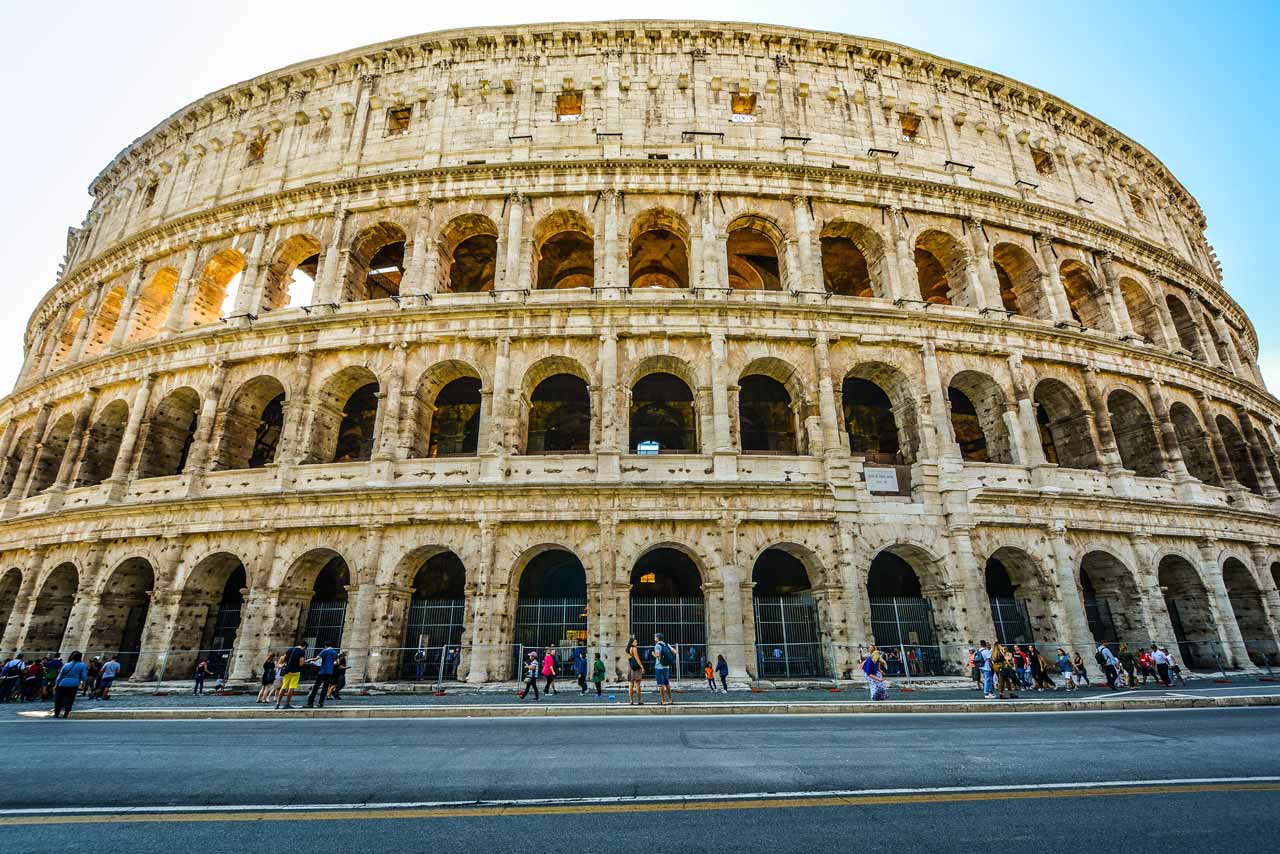
What are the best architectural landmarks to visit as an architect?
Listed below are the best architectural landmarks to visit as an architect:
- Sagrada Familia: The Sagrada Familia is an iconic basilica located in Barcelona, Spain. Designed by popular architect Antoni Gaudí, it is known for its unique and intricate architectural style that combines Gothic and Art Nouveau influences. The basilica has been under construction since 1882 and is still ongoing, making it a fascinating example of long-term architectural vision and dedication. Visitors can admire the stunning facades, soaring towers, and intricate details that make the Sagrada Familia a must-visit landmark for architects and enthusiasts alike.
- Taj Mahal: The Taj Mahal is a UNESCO World Heritage site in Agra, India. Built in the 17th century by Emperor Shah Jahan as a mausoleum for his beloved wife, it is considered one of the most beautiful examples of Mughal architecture. The Taj Mahal features intricate marble inlay work, symmetrical design elements, and a stunning white marble exterior. Its harmonious proportions and elegant details make it a masterpiece of architectural craftsmanship, attracting millions of visitors annually.
- Sydney Opera House: The Sydney Opera House is an iconic performing arts center in Sydney, Australia. Designed by Danish architect Jørn Utzon, it is known for its distinctive sail-like roof structure. The complex houses multiple performance venues and symbolizes modern expressionist architecture. Its innovative design and engineering challenges make it a significant landmark in architectural history. Visitors can take guided tours to explore the interior spaces and learn about the architectural concepts behind this world-famous structure.
- Guggenheim Museum Bilbao: The Guggenheim Museum Bilbao is a contemporary art museum in Bilbao, Spain. Designed by architect Frank Gehry, it is recognized for its striking, curvilinear form and titanium-clad exterior. The museum’s unconventional design pushes the boundaries of traditional architecture, creating a visually captivating and highly acclaimed landmark. Inside, visitors can experience a diverse collection of modern and contemporary art. The Guggenheim Museum Bilbao has revitalized the city, symbolizing urban regeneration through architecture.
- Fallingwater: Fallingwater is a residential house located in Mill Run, Pennsylvania. Designed by architect Frank Lloyd Wright, it is an iconic example of organic architecture that integrates seamlessly with its natural surroundings. The house is built over a waterfall and features cantilevered balconies and open spaces that blur the boundaries between indoors and outdoors. Fallingwater showcases Wright’s principles of harmony between architecture and nature, making it a significant landmark for architects interested in sustainable design.
- St. Peter’s Basilica: St. Peter’s Basilica is a major basilica in Vatican City, Rome. Designed by known architects, including Michelangelo and Gian Lorenzo Bernini, it is the largest church in the world and a masterpiece of Renaissance and Baroque architecture. The basilica’s grandeur is evident in its vast dome, intricate mosaics, and numerous works of art. Architects can appreciate the meticulous detailing and craftsmanship that went into creating this architectural marvel. Visitors can explore the interior, including the famous St. Peter’s Square, and marvel at its architectural and artistic splendor.
- The Louvre: The Louvre is a world-known art museum in Paris, France. Originally a medieval fortress, it was transformed into a grand palace and later became a museum. The Louvre is celebrated for its iconic glass pyramid entrance, designed by architect I.M. Pei. The museum houses an extensive collection of art and historical artifacts, including famous works such as the Mona Lisa. Architects can appreciate the museum’s architectural evolution, from its historic roots to the modern additions that have transformed it into a cultural landmark.
- Burj Khalifa: The Burj Khalifa is a skyscraper in Dubai, United Arab Emirates. Designed by the architectural firm Skidmore, Owings & Merrill, it is the tallest building in the world, standing at 2,717 feet (828 meters). The Burj Khalifa’s sleek and futuristic design features a stepped silhouette and a reflective glass facade. Its engineering marvels, such as the advanced structural systems and high-speed elevators, make it an impressive landmark for architects interested in tall building design. Visitors can enjoy panoramic views of Dubai from the observation decks on the upper floors.
- The Parthenon: The Parthenon is an ancient temple atop the Acropolis hill in Athens, Greece. Built in the 5th century BCE, it symbolizes classical Greek architecture and is one of the most influential buildings in Western history. The Parthenon showcases the Doric order with its iconic columns and pediments adorned with marble sculptures. Its harmonious proportions and refined architectural details demonstrate the principles of balance and symmetry. Architects can study the Parthenon’s design to understand the foundations of classical architecture and its enduring impact on architectural aesthetics.
- The Great Wall of China: The Great Wall of China is an ancient fortification that stretches across northern China. It is an architectural marvel and a UNESCO World Heritage site built over centuries. The wall showcases various construction techniques, including brick, stone, and rammed earth. Its strategic design incorporates watchtowers, battlements, and defensive features. The Great Wall’s vast scale and historical significance make it a remarkable landmark for architects interested in the intersection of architecture and military engineering. Visitors can explore different sections of the wall and admire the panoramic views of the surrounding landscapes.


